Among the many cultural plants, Tomatoes are most susceptible to various diseases. Everyone who dealt with their cultivation is well acquainted with such a problem - farmers, ordinary gardens and greenhouses. But if you try to properly adhere to the technique of cultivation and special crop rotation, then you can avoid plant infection. Although you should not forget that nature itself introduces its changes, and, despite the fulfillment of all instructions, tomatoes are nevertheless.
Signs of disease development
Sometimes at first glance you will not understand what the plant is sick and it is impossible to "ask", therefore there are several signs that can be determined that the tomato is sick and in time to save it.
Signs of diseases:
- the growth trend is changing;
- there is a non-compliant color or form of some leaves and infloresions;
- characteristic features of the influence of foreign organisms in the form of gum, mucus and spioning are visible.
Very often, the tomato may be damaged and noncommunicable diseases that are causes of improper cultivation. Sometimes it is difficult to externally highlight nutritional deficits from the disease, so it is necessary to carefully observe your plants and try to notice the "signals" of the diseases that the tomatoes are eliminated and eliminated them.
Diseases affecting the leaves and stems
There are many types of diseases that affect not only leaves and stems, but also fruit. Each of these diseases has its own approach in treatment.
Harm from the defeat of tomatoes may be like this:
- growth is suspended;
- leaves;
- fruits are spoiled.
Some treatment facilities prevent the occurrence of diseases, but their useful action can be absolutely different. In order to prevent the spread of infection, the appropriate microclimate should be maintained, tight greenhouses and remove extra leaves.
Below are the most common diseases of tomatoes:
- Puffy dew is a disease caused by the active action of fungus. High humidity favors is favorable - in order to sprinkle disputes need dampness. You can avoid using biopreparations during active vitality.
- White spotty or septoriasis is also a fungal disease of tomatoes (photo), the infection of which is possible due to the remains of the plants on the open soil. First, the fungus is defeated by the lower leaves of tomatoes seedlings - blessed spots appear with small dark dots. After that, the leaves completely become brown, gradually fade and creep. Gradually, the disease "crawling" up, and the tomato dies. Refrying the affected plant can be removed by 1% Bordeaux mixture. However, during the cultivation of seedlings will be wisdom to exterminate an infected sightery. In a shotgun, the land must be soaked in a mixture of manganese and flood wood ash.
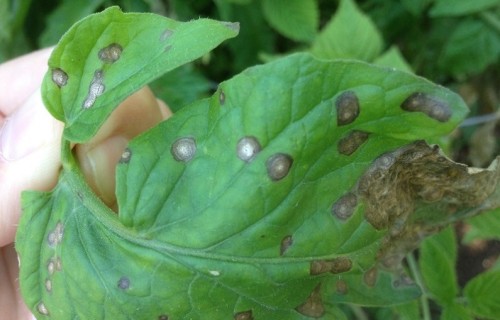
- With the pendoriosa, the leaves are also covered with small yellow-gray spots on the outside and olive raid - with the inner. Over time, the stains become larger, and the flight changes its shade on reddish-brown. The cause of the disease is an excessive watering of soil and humidification of air. The plant is better removed, and the land is completely treated with the same way as in white spottedness, as well as to pollimate the drug with copper content.
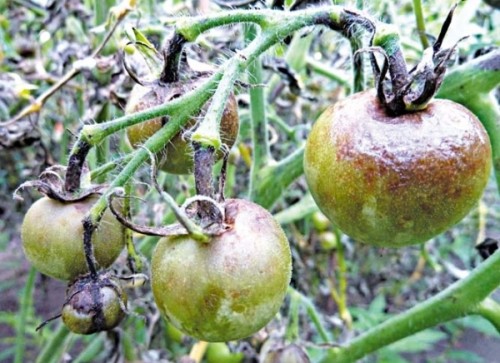
- Black bacterial spot can spread if the seeds and land were not processed. After some time on the stems of seedlings, on the tips of the leaves and stiffs, the elongated black spots can be noticed. Careful processing of inventory, land and seed will prevent the appearance of black spot. To greater degree, such tomato diseases may appear in the summer in film greenhouses.
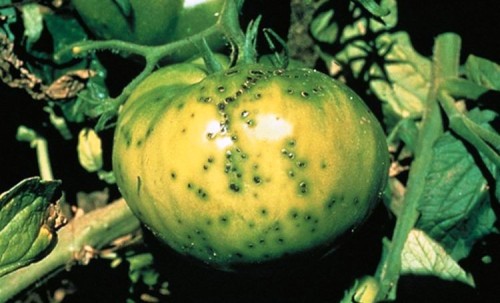
- Botritio spottedness or gray rotting appears on another green tomatoes in the form of pale green or yellow spots, which after some time become bright orange. The damage to the fungal disease does not affect the taste of the fetus - it remains edible. Botritis is almost the safest of fungi and exists in all greenhouses and gods. For treatment, you should simply regularly clean the dried leaves and improve the ventilation of the greenhouses.
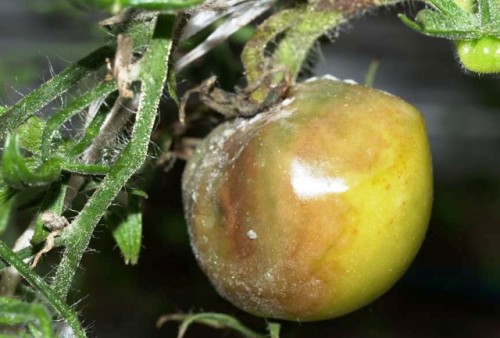
- Bright spottedness is characterized by pronounced external spots with a yellow tint and an inner purple laid. The leaf gradually changes the color on the brown and fades. Subsequently, the harvest decreases several times. For treatment and prevention, free air circulation should be achieved by increasing the gap between plants and removing unnecessary leaves, it is also recommended to burn victims and dead sprouts.
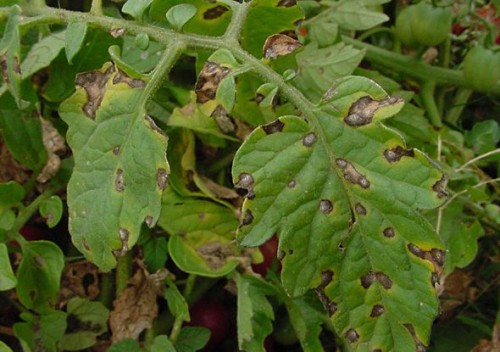
- Phytoofluorosis is the most malicious and frequently occurring tomato seedlings at home. In the rainy season and cold, the fungus, which causes the disease, diverges on plants instantly and reduces their fertility. A feature is the defeat of dark spots not only of leaflets, but also tomatoes: the first become yellow and gradually crumble, and the second rot and fall off from the stem. At the initial stage, it is necessary to treat seeds in a solution of mangartage for 20 minutes, and then rinse under the jet of water. You can also use ash water in the form of irrigation or irrigation. The method of preparation of ash water: dilute 3 tbsp. Ash in 1 l of clean water, let it brew 2 days, then clean the infusion and process the plant 1 time a few weeks. In the event that phytoofluorosis is only in the first stage, you can apply the Bordeaux mixture. At the started stage, it is better to resort to chemicals that are sold in specialized stores.
- The cause of the vertex rotten of tomatoes may be a lack of calcium. In the place where the petal on the tomato was, in the opposite side, a dense brown spot arises from the tail, and the pulp under it begins to rotate. As a result of the development, only a few fruits were rotted on the branch, they can remain intact, so there will be some kind of harvest. Most often, this disease appears on plants that were not grown on open soil, but in small containers. Because of the poor watering and rapid drying of the land, the tomatoes absorb a small amount of calcium.
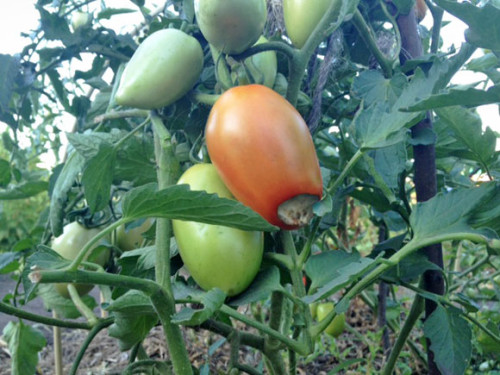
Viral diseases
There are several types of viral diseases at Tomatoes: spotted wilting, stricken, tomato mosaic, a fern leaf and a crowd. Signs can serve as amended, the form of leaves and their coloring. Plants are gradually braked in growth and development, and the fruit changes in color and cannot mature. As a result, these plants are better destroyed, since they will not bring a real crop. Just like a person, plant viruses are spread instantly, so after working with patients with plants, the tools should be carefully displaced and wash your hands. The virus pedestal may be vegetable parasites that feed on the juice of tomatoes. It is undesirable to use pesticides near the plants, since their particles are scattered with air flows.
Consider more than several types of viral diseases:
- With tomato mosaic it is better to use a stable hybrid penetration of tomatoes. In the season, the appearance of phones should be protected by plants from these carriers and spray several times during this period a 10% solution of low-fat milk and microelements. A suitable moment to treat plants is the period when they begin to be fruit, as the ambient temperature rises, and this is the most suitable situation for spreading the virus.
For prevention, it is better to use the seeds of 2-chrical presses and spray the plants with a liquid urea mixture (1 tsp by 10 liters of water) and 1 l of low-fat milk once in a decade. The sick seedlings are destroyed, and the rest is treated with a solution of manganese.
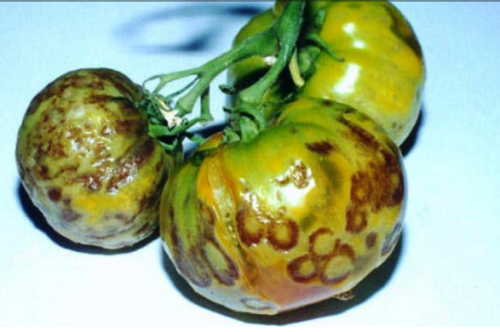
- Strik is transmitted from seed damaged plants. It is all covered with brown strokes and stains. The leaves dry out, and the stem and roots are thinning and breaking. In order to avoid the distribution of this virus, you should not take infected seeds and process them in the usual way, and bad plants should be burned.
- In connection with the hot weather and disadvantage of moisture, there may be a stop in the development of the fetus. In this case, the tomato blooms as usual, then the marking appears on it, but as soon as the fruits grow up to the size of a little more pea, the development stops. It can also be a reaction to a viral infection that prevents the usual pollination process. Meful fruits become dark and dry out. In the arid summer, watering tomatoes are better in the early morning, and then shake the flowers for pollination slightly.
Future diseases
In addition to common diseases spreading throughout the plant, there are diseases whose action is aimed at defeating the fruits themselves:
- Most often, dense yellow or green peel appears near the tail. The reason for this may be excessive illumination of the greenhouse and the lack of potassium and phosphorus. Because of such an anomaly, the tomato itself can become completely inedible, so the greenhouse should be blocked at that time when the plants begin to bloom and be fron. The greenhouse needs to be aircraft several times a day so that there is a good air circulation. Plants need to wipe well and apply feeding, but not to overflow.
- Quite often in greenhouse plants, the fruit ripes in parts - externally proceeds normally, but the pulp remains harsh. The surface can be uneven, and in places stitched. Uneven maturation is associated with a shortage of potassium or excessive overheating. Similar features are green spots at the tail. Typically, only lower fruits are subject to change, but not everything is in a row, so the crop will be. To avoid this situation, you need to slightly dimming the greenhouses and stick to the same watering system and feeding, as in the first case.
- In the disease of hollow fruits, tomatoes are able to ride and mature, but they do not have such juits, like a regular fetus, and a sufficient number of seeds. The probable reason for the appearance of the ailment may be viral infection, the effects of herbicide, scarce pollination and bad growth conditions. Fruits remain edible, but not so juicy and tasty. For treatment, it is necessary to constantly moisturize the land and feed the plants, as well as plant in places where there are no drafts and no temperature drops. Chemical preparations are better not to use and apply artificial pollination.
- The cracking of the fruit comes from the skin gap, over time they can lose weight, remaining edible. However, if the gaps did not drag on, then the tomato begins to recruit moisture, and such an infection is penetrating into it, as a gray rot, which was written above. Then the tomato is not suitable for use. Fruits are infected on the branch partially by negligence - rare watering and temperature drop, so everything is possible to ensure favorable conditions for the development of tomatoes.

- Southern phytoofluorosis or eye deer occurs when an infectious fungus appears. When the fruit matures, a dark brown point appears on it, which, increasing, turns into similar in appearance with the target, circles. If the humidity is raised, a light raid appears on the fruits, leaves and stems. In addition to tomatoes, eggplants and sweet peppers are prone to this disease. Since the disputes of the fungus spread from the ground through the spray of water, they are mainly infected by the fruits that are in close proximity to the soil. South phytoofluorosis appears in greenhouses where excessive moisture is present. The solution may be all the same stable air circulation and the border of tomato sprigs. Try to water without splashing water, as well as warp at the foot of the bush plastic or paper bedding.
In order to avoid many diseases of the seedlings of tomatoes, fruits and leaves, you need to adhere to simple rules in their cultivation and watering. Try to resort to the use of pesticides as much as possible, and then you can enjoy the natural taste and benefit of home tomatoes.

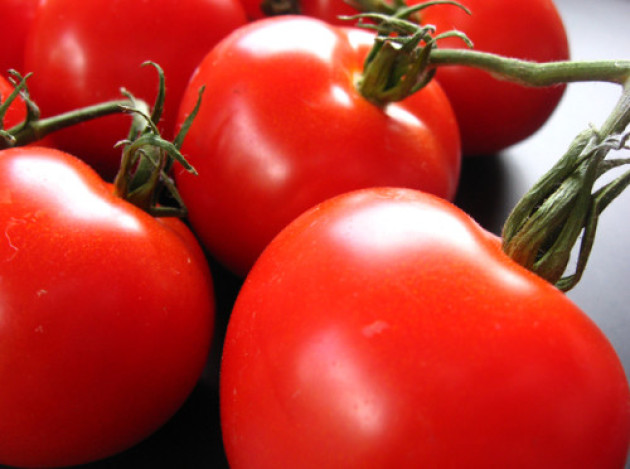




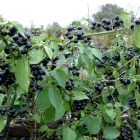





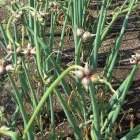
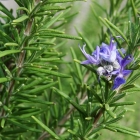
 Start a discussion ...
Start a discussion ...